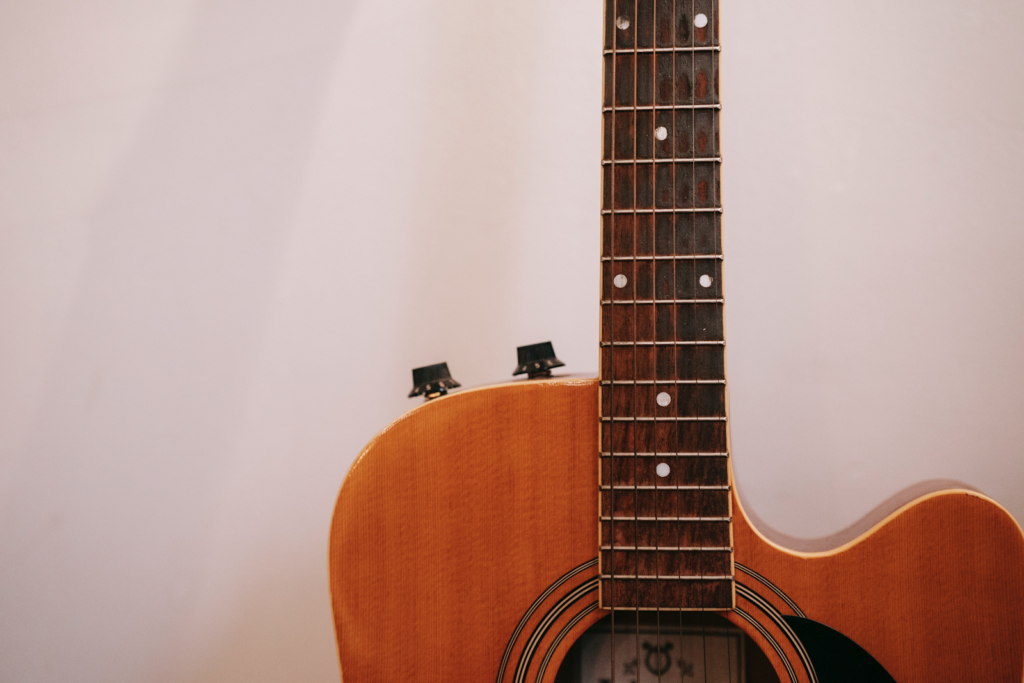Welcome to the melodious world of the key of D major! This key, a favorite among guitarists, radiates a bright and uplifting sound. Understanding chords in the key of D major is essential for any acoustic or electric guitarist, whether you’re a beginner or an experienced player.
In this guide, we’ll explore the D major chord and some music theory to help you master your guitar playing.
Understanding the D Major Scale
Before diving into the chords, let’s briefly touch on the D major scale. Major scales are the foundation of the chords in D major. It consists of the notes D, E, F♯, G, A, B, C♯. Remember, the chords in any major key are formed by notes from their respective diatonic scale.
Playing the D Major Chord
To play the D major chord, here’s what you need to do:
- Place your first finger on the second fret of the G string.
- Put your second finger on the second fret of the high E string.
- Position your third finger on the third fret of the B string.
- Strum from the fourth string down.
This chord’s bright and open sound is a cornerstone in the chords in D major.

G Major: A Vital Chord in Key of D
The G major chord adds depth to the key of D major. To play it:
- Place your first finger on the second fret of the A string.
- Put your second finger on the third fret of the low E string.
- Place your third finger on the third fret of the high E string.
- Strum all six strings.
This chord’s full-bodied sound complements the D major chord beautifully.
The A Major Chord
The A major chord is another major chord that resonates well in the key of D major. To form it:
- Place your first finger on the second fret of the D string.
- Position your second finger on the second fret of the G string.
- Put your third finger on the second fret of the B string.
- Strum all six strings.
This chord brings a bright and cheerful sound to the chords in D major.
B Minor: Adding Depth to the Key of D Major
B minor, a crucial chord in this key, adds a contrasting color to the major chords. To play B minor:
- Place your first finger on the second fret of the A string.
- Put your second finger on the second fret of the high E string.
- Position your third finger on the third fret of the B string.
- Strum all strings.
This chord’s slightly melancholic tone offers a nice balance to the major chords in the key.
Expanding Your Chord Knowledge
Understanding the ii, iii, iv chords, as well as diminished chords, can further enhance your play in the key of D major. These chords, derived from the major scale, provide a wider range of musical expression.
- Chord ii (E Minor in D Major): Subtle, soft, and delicately wistful.
- Chord iii (F♯ Minor in D Major): Moody, introspective minor chord.
- Chord vi (B Minor in D Major): Versatile, emotive, gently melancholic.
- Chord IV (G Major in D Major): Bright, uplifting, harmoniously rich.
Applying Music Theory
Knowing the theory behind the chords in the key of D major can greatly improve your playing. Recognize the relationships between the chords and how they correspond to the notes in the D major scale.
Practical Tips
Practice Regularly – Familiarity with the finger positions for these chords comes with regular practice.
Listen to Songs in D Major – Hearing these chords in context helps in understanding their use.
Experiment with Strumming Patterns – Different strumming patterns can bring out unique qualities in these chords.
Conclusion
Mastering chords in the key of D major opens up a world of musical possibilities, helping you learn popular chord progressions to help you play a plethora of songs. Whether you’re composing your own music or playing your favorite songs, these chords are fundamental. Remember, the key to mastery is practice and exploration. Happy strumming!


